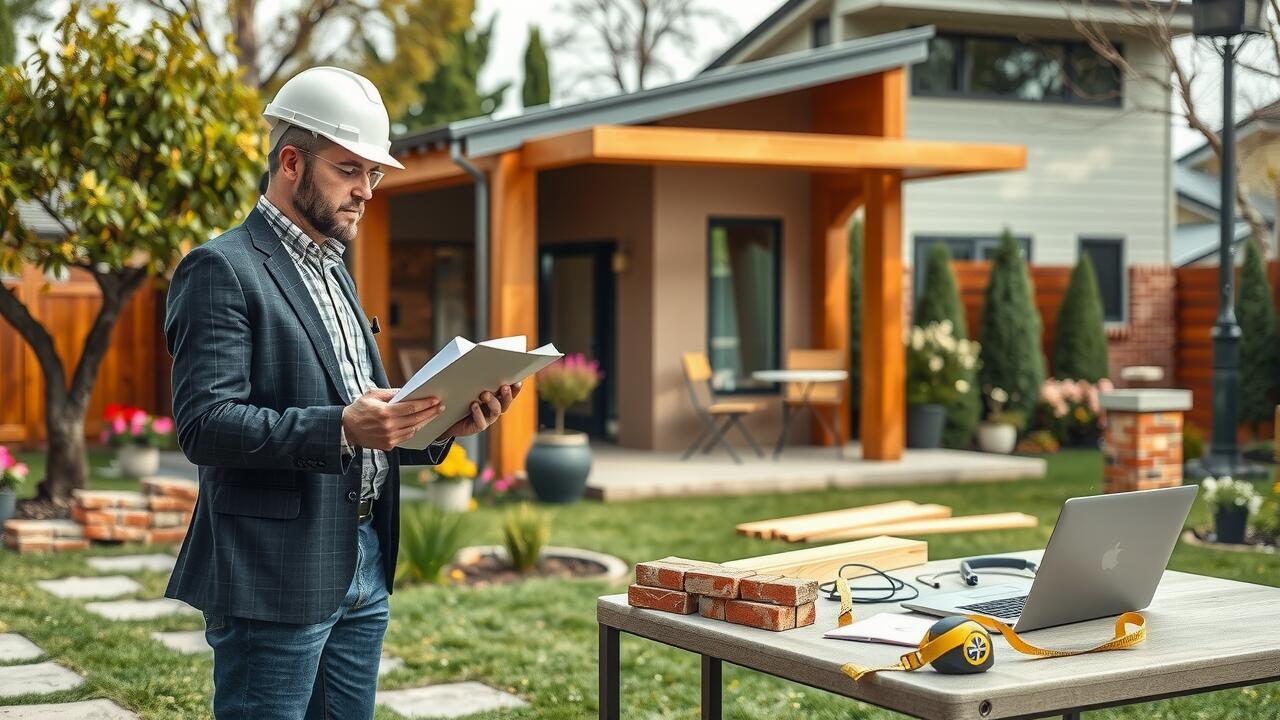
Table Of Contents
Tax Implications of Building an ADU
Building an ADU in Mint Canyon, Santa Clarita, can lead to various tax implications which potential owners should consider. Property taxes may increase due to the added value an ADU brings to a property. This increase will typically be calculated during the annual property tax assessment. Homeowners should evaluate how this might affect their overall housing costs and financial planning.
Additionally, owners might benefit from certain tax deductions related to the construction and operation of the ADU. Expenses such as construction costs, maintenance, and property management can potentially be deducted, enhancing the financial feasibility of the investment. Understanding local regulations and tax incentives available specifically for ADUs in Santa Clarita can further optimize potential returns.
Property Tax Increases and Benefits
When considering the financial implications of adding an ADU in Waltz, Santa Clarita, property tax increases are an important factor to examine. Building an Accessory Dwelling Unit often leads to an increase in assessed property value. Homeowners may notice higher property taxes as a result. These adjustments typically occur after the completion of the ADU, reflecting its added square footage and rental potential.
Despite the potential for increased property taxes, there are notable benefits that can offset these expenses. An ADU can generate rental income, contributing to the overall cash flow of the property. Furthermore, a well-constructed ADU can enhance the overall value of the home, making it a worthwhile investment for many. Homeowners may find that the increase in property tax is manageable given the potential profits from renting out the unit.
Comparing ADUs to Traditional Real Estate Investments
When evaluating the return on investment for an accessory dwelling unit (ADU) in Mint Canyon, Santa Clarita, it is essential to consider both the potential rental income and the associated costs of construction and maintenance. ADUs typically offer a more affordable entry point for real estate investment compared to traditional properties. Homeowners can generate passive income by renting out the unit while retaining the main house for their own use. This dual benefit is particularly appealing in high-demand areas like Santa Clarita, where housing shortages drive rental prices up.
In contrast, traditional real estate investments often require a larger initial investment, including the purchase of the property itself. Buyers typically face higher property prices, ongoing mortgage payments, and maintenance costs for single-family homes. While these properties may appreciate over time, the risks and financial obligations can be more substantial. The ADU model provides a unique opportunity to leverage an existing property, making it an attractive option for those looking to diversify their investment portfolios without taking on the full financial burden of a traditional real estate investment.
Pros and Cons of Each Investment Type
Investing in an ADU in Mint Canyon, Santa Clarita offers unique advantages. Property owners can generate rental income, providing an immediate return that traditional investments may not offer. Additionally, the demand for rental units in areas like Santa Clarita often leads to higher occupancy rates. Investors may also benefit from increased property value, as properties with ADUs can attract buyers looking for multi-generational living options or supplementary income sources.
However, there are downsides to consider when investing in an ADU. The initial construction costs can be high, and unexpected expenses may arise during the process. Zoning regulations and local ordinances may impose limitations on what can be built, potentially complicating the project. Furthermore, ongoing maintenance and management responsibilities come with the territory, which may deter some potential investors looking for a more passive income stream.
Regulatory and Zoning Considerations
Building an ADU in Waltz, Santa Clarita, requires careful attention to local zoning laws and regulations. Different neighborhoods may have specific guidelines regarding setbacks, height restrictions, and total allowable square footage. Homeowners should familiarize themselves with these regulations to ensure compliance and avoid potential fines or delays in the construction process. Consulting with local planning authorities can also provide valuable insights into any recent changes in zoning policies that could affect the project.
Permitting is another critical aspect of constructing an ADU in Waltz, Santa Clarita. Obtaining the necessary building permits and inspections is mandatory before breaking ground. The process often involves submitting detailed architectural plans and undergoing various reviews. Understanding these requirements early on can streamline the timeline for construction and help prevent any legal complications that may arise from non-compliance. Exploring local resources and engaging with professionals who specialize in ADU construction can simplify navigating these regulatory hurdles.
Required Permits and Local Regulations
Building an ADU in Waltz, Santa Clarita requires navigating a series of permits and regulations that are pivotal to the construction process. Depending on the size and design of the ADU, homeowners may need to obtain a building permit, electrical permit, plumbing permit, and possibly more. Familiarity with local zoning laws is essential, as these laws dictate the allowable size, height, and setbacks for accessory dwelling units.
In addition to securing the necessary permits, applicants must ensure their proposed ADU aligns with Santa Clarita’s design guidelines and regulations. The city may have specific requirements regarding architectural styles or land use, aimed at preserving the community’s aesthetic and functional integrity. Proactive engagement with local planning departments can clarify requirements and streamline the approval process, helping homeowners avoid potential delays or costly adjustments later on.
FAQS
What is an ADU?
An ADU, or Accessory Dwelling Unit, is a secondary housing unit located on the same lot as a primary residence. It can be a separate structure or a converted space within the main home.
How does building an ADU affect my property taxes in Santa Clarita?
Building an ADU can lead to an increase in property taxes, as the assessed value of your property may rise. However, there can also be tax benefits, such as potential deductions related to rental income.
What is the expected return on investment (ROI) for an ADU in Santa Clarita?
The ROI for an ADU can vary widely, but many homeowners see a return of 20% to 50% or more, depending on rental demand, location, and specific market conditions.
Are there specific regulations I need to consider when building an ADU in Santa Clarita?
Yes, Santa Clarita has specific zoning laws and regulations regarding ADUs. It is important to check with local authorities to understand required permits, size limitations, and design standards.
What are the pros and cons of investing in an ADU compared to traditional real estate investments?
Pros of investing in an ADU include potential rental income and increased property value, while cons may include upfront construction costs and ongoing maintenance. Traditional investments often involve different risks and rewards, such as market volatility and tenant management.


